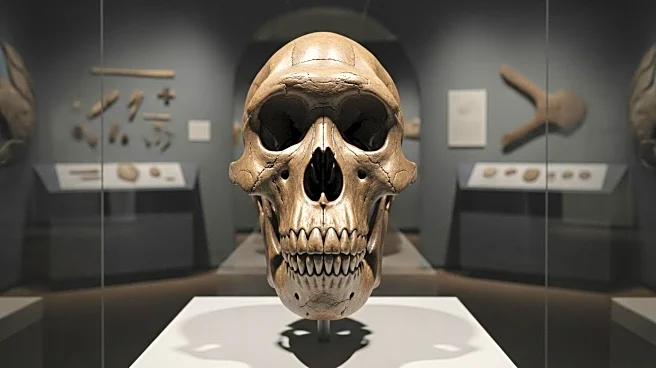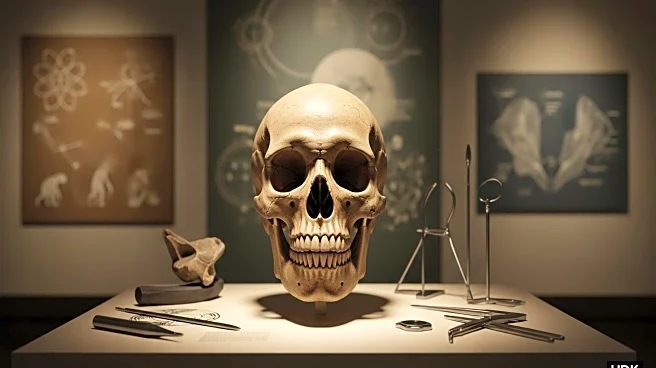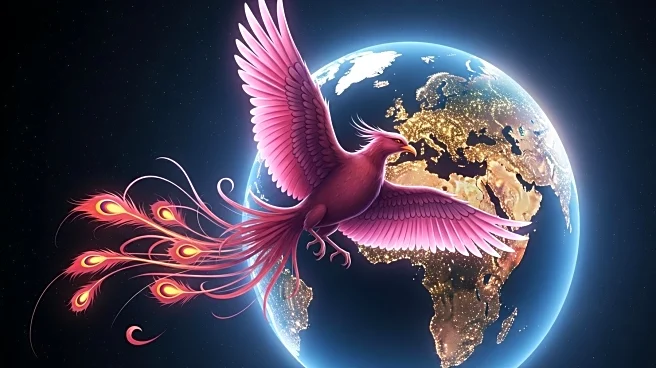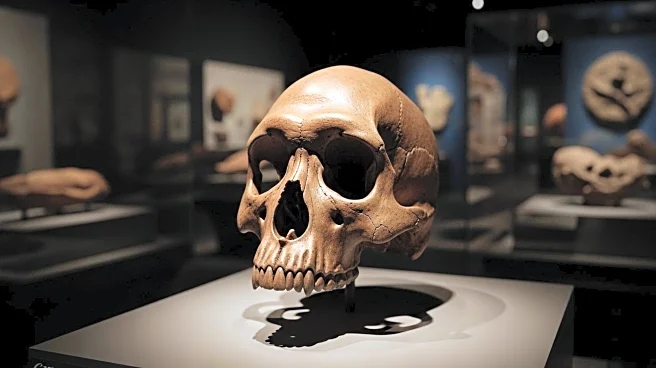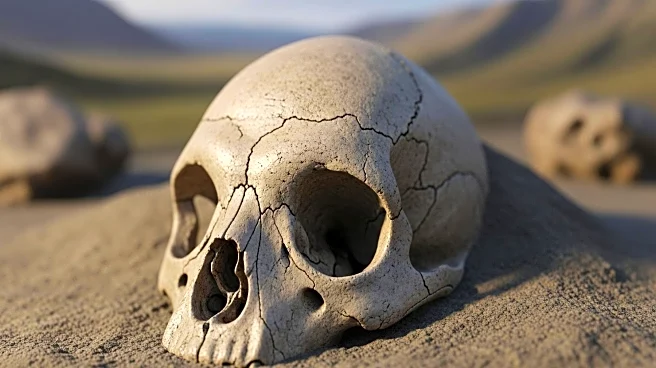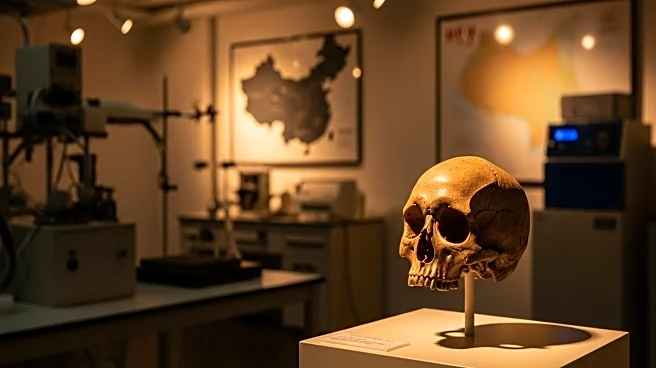What is the story about?
What's Happening?
A million-year-old skull discovered in China is challenging the established timeline of human evolution. Published in Science, the analysis suggests that Homo sapiens may have emerged half a million years earlier than previously thought, potentially co-existing with Neanderthals for a longer period. The skull is believed to belong to Homo longi, an early hominin species. This discovery could reshape understanding of human ancestry and the interactions between different hominin species.
Why It's Important?
The implications of this discovery are profound for the field of paleoanthropology, as it may necessitate a reevaluation of the evolutionary timeline and the relationships between early human species. If Homo sapiens did emerge earlier, it could alter theories about migration patterns and cultural exchanges between hominin groups. This finding could influence academic research, museum exhibits, and educational content related to human evolution, sparking debates and further studies in the scientific community.
What's Next?
Further research and analysis are required to confirm the findings and understand the full implications of the discovery. Scientists will likely conduct additional studies on the skull and surrounding artifacts to gather more evidence. The academic community may engage in discussions and debates to assess the validity of the new timeline. This discovery could lead to new expeditions and research projects aimed at uncovering more evidence of early human life.
Beyond the Headlines
The discovery raises ethical questions about the preservation and study of ancient human remains. It also highlights the importance of international collaboration in scientific research, as findings from one region can have global implications. The potential revision of human evolution timelines may influence cultural narratives and perceptions of human history.
AI Generated Content
Do you find this article useful?
